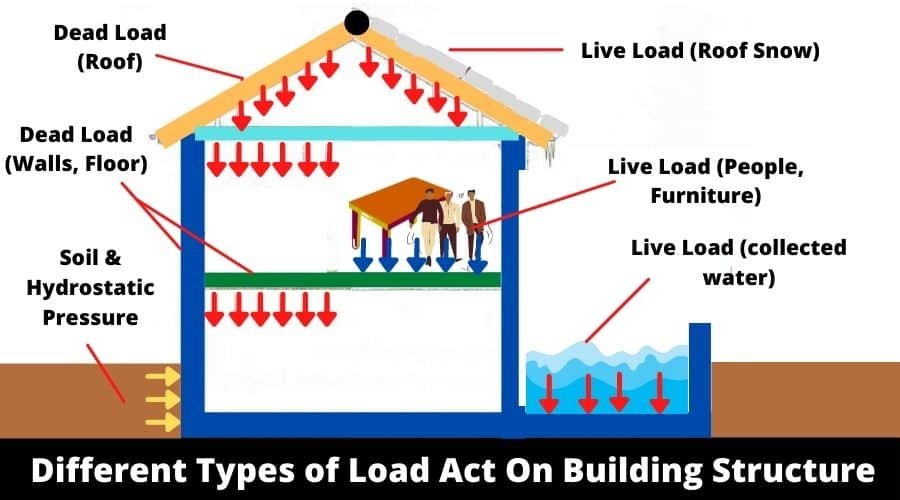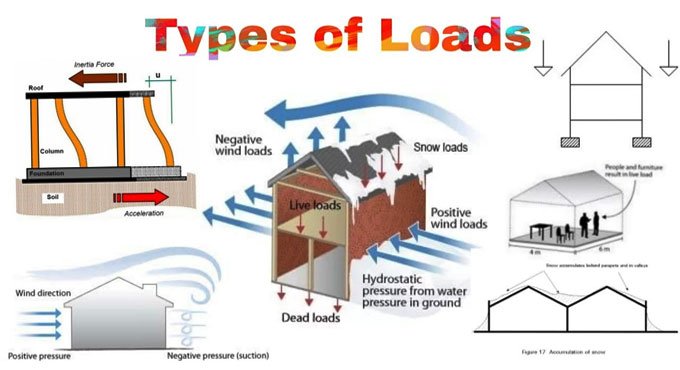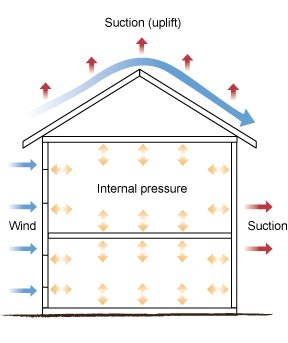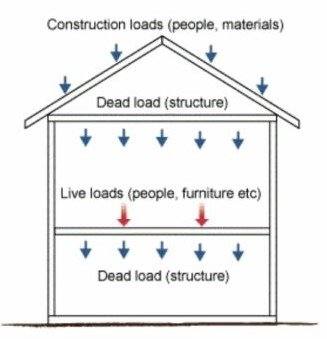Loads are the forces that a structure experiences that can cause deformation and stress, and significantly impact its integrity. Before designing or building a structure, it is extremely important to take into account the type of loads acting on the structure.
Structural analysis is a field of study that focuses on analysing and determining the effect of loads on structures and its elements.
There are different types of structural loads such as dead load, live load, environmental load, and impact load. We’ve listed everything you need to know about the types of loads in buildings and their impact below for you to read.

What is the importance of loads in engineering?
It is important to calculate the load on a building because excessive load can lead to structural failure. Any load can cause stress, deformation and displacement in a structure, so it should be monitored and controlled right from the design of the structure to its construction.
To ensure this, a set of building codes defined by the regulatory authorities should be followed. By following these guidelines you will have a structure strong enough to remain fit for use for a longer duration of time.
 Different Types of Loads
Different Types of Loads
The loads on the building can be broadly classified into three categories:-
1. Vertical Loads
It consists of live load, dead load, and impact load.

2. Horizontal Loads
It includes seismic loads, snow, rain, and wind load (environmental loads).
3. Longitudinal Loads
Longitudinal loads or breaking and tractive forces are considered in special cases only.
Let’s further deep dive into these loads and their examples for better understanding. Find out the different types of loads and their calculation by reading the article below.

Dead Loads
Dead loads or static loads are permanent as it is the self-weight of the building’s structural elements. This type of load remains constant over time and is calculated by the volume of each section and multiplied by the unit material weight.
Examples of dead loads include the weight of fixed elements like beams, walls, roofs, floors, and rooted fixtures.
Live Loads
Live loads are loads that can change over time. These are variable and include anything in a building that can be moved around. Live load is factored into the calculation of the gravity load of a building. Their measurement is done on pounds per square foot scale.
Examples of live loads are people walking in and out of the building and parked vehicles.
Environmental Loads
It consists of loads like Wind load, snow load, and earthquake loads. These loads should also be considered before designing a structure as they have a significant impact on the overall integrity of the structure.
Some FAQs on Building Loads
1. What are the 4 types of structural loads?
There are primarily 4 types of structural loads on buildings, dead loads, impact loads, live loads, and environmental loads. We’ve defined each of them in our article above.
2. What is a dead load on buildings?
Dead loads are the type of loads that are an essential part of the building itself. Examples of dead load are walls, beams, ceilings, columns, floors, plasters, permanent fixtures, and roofs.
3. What is a live load example?
Variable or live loads depend upon the occupancy of the structure and may differ from time to time. Some of the most common examples of live load include; the number of people, vehicles, the weight of furniture, and the action of wind on an elevation.
4. What is the maximum live load?
According to the U.S. Building Codes, the live load on a residential building should not exceed 40 pounds per square foot(SPF).
5. What are environmental loads?
Environmental loads as the name suggests are caused by environmental factors such as wind, current, waves, and other external forces.
Conclusion
The type of load on a building is an important factor that should be taken into account before planning and creating the design of a structure. We hope this article was helpful to you!
Thank you for reading!










